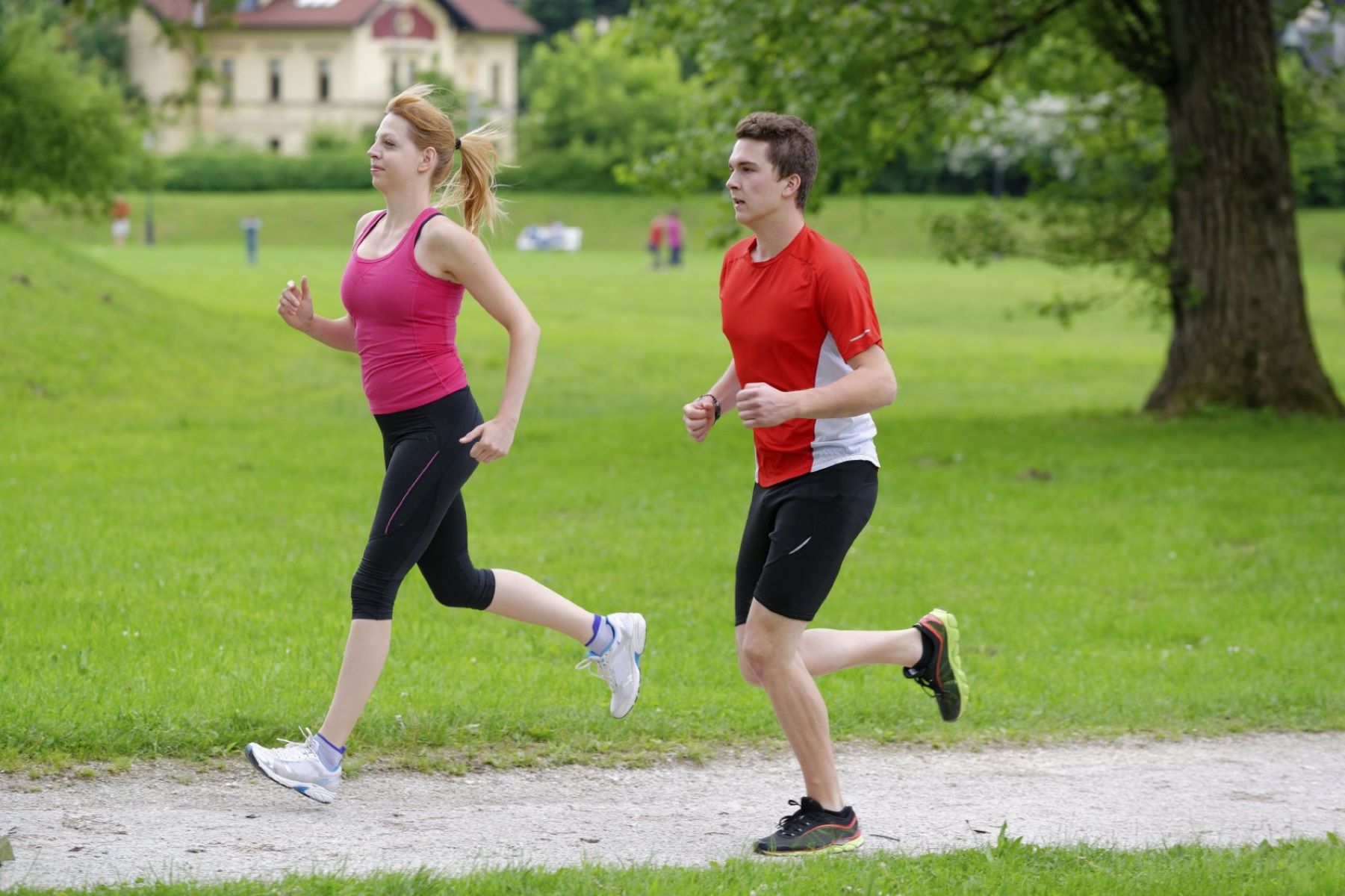Home>Training for Specific Goals>Speed Work>Understanding Critical Velocity Training For Runners


Speed Work
Understanding Critical Velocity Training For Runners
Published: February 26, 2024
Learn how Critical Velocity training, also known as speed work, can help runners improve their speed and endurance. Understand the principles and benefits of this essential training method.
(Many of the links in this article redirect to a specific reviewed product. Your purchase of these products through affiliate links helps to generate commission for Therunningadvisor.com, at no extra cost. Learn more)
Table of Contents
The Science Behind Critical Velocity Training
Critical Velocity (CV) training is a scientifically proven method that can significantly enhance a runner's performance. At its core, CV training focuses on improving the body's ability to sustain a high level of effort over an extended period. This is achieved through a combination of aerobic and anaerobic energy systems, which play a crucial role in determining an athlete's overall endurance and speed.
During CV training, runners aim to maintain a pace that hovers around their critical velocity, which represents the maximum speed they can sustain before fatigue sets in. This pace is closely linked to an individual's lactate threshold, the point at which the body's production of lactate exceeds its ability to clear it from the bloodstream. By training at or near critical velocity, runners can effectively push their lactate threshold higher, enabling them to run faster for longer periods without succumbing to fatigue.
The physiological adaptations that occur during CV training are multifaceted. One of the key benefits is the improvement of mitochondrial density and efficiency within muscle cells. Mitochondria are the powerhouses of the cell, responsible for producing adenosine triphosphate (ATP), the primary energy currency of the body. Through consistent CV training, the body adapts by increasing the number and function of mitochondria, leading to enhanced energy production and utilization during prolonged, high-intensity efforts.
Furthermore, CV training stimulates the development of fast-twitch muscle fibers, which are essential for generating explosive power and speed. By engaging these fast-twitch fibers at critical velocity, runners can enhance their ability to maintain a swift pace while minimizing the accumulation of fatigue-inducing byproducts.
From a cardiovascular perspective, CV training elicits favorable adaptations in the heart and circulatory system. Regular sessions at critical velocity promote an increase in stroke volume, allowing the heart to pump more blood with each beat. This results in improved oxygen delivery to working muscles, enhancing endurance and delaying the onset of fatigue during sustained efforts.
In summary, the science behind critical velocity training revolves around optimizing the body's physiological mechanisms to sustain high-intensity efforts over extended durations. By targeting specific energy systems, promoting mitochondrial adaptations, and enhancing cardiovascular function, runners can elevate their performance and achieve new levels of speed and endurance.
Read more: Understanding 80/20 Training For Runners
Benefits of Critical Velocity Training for Runners
Critical Velocity (CV) training offers a myriad of benefits that can profoundly impact a runner's performance and overall athletic prowess. By incorporating this specialized training approach into their regimen, runners can unlock a range of advantages that directly contribute to their ability to sustain high speeds and endure prolonged efforts.
1. Enhanced Endurance and Speed
One of the primary benefits of CV training is the substantial improvement in both endurance and speed. By consistently training at or near their critical velocity, runners can effectively elevate their lactate threshold, enabling them to maintain a faster pace for extended periods without succumbing to fatigue. This translates to the ability to cover longer distances at higher speeds, a critical advantage in various racing scenarios.
2. Mitochondrial Adaptations
CV training stimulates the development of mitochondria within muscle cells, leading to enhanced energy production and utilization. This increase in mitochondrial density and efficiency allows runners to sustain high-intensity efforts for longer durations, as their muscles become more adept at generating and utilizing energy, ultimately contributing to improved overall performance.
3. Improved Cardiovascular Function
Engaging in CV training prompts favorable adaptations in the cardiovascular system. The heart's stroke volume increases, enabling it to pump more blood with each beat. This results in enhanced oxygen delivery to working muscles, ultimately improving endurance and delaying the onset of fatigue during sustained efforts.
4. Development of Fast-Twitch Muscle Fibers
Critical Velocity training also promotes the development of fast-twitch muscle fibers, which are crucial for generating explosive power and speed. By engaging these fast-twitch fibers at critical velocity, runners can enhance their ability to maintain a swift pace while minimizing the accumulation of fatigue-inducing byproducts, thereby improving their overall performance.
5. Mental Toughness and Race Strategy
Consistent training at critical velocity not only strengthens the body but also fortifies the mind. Enduring the demands of sustained high-intensity efforts fosters mental toughness, preparing runners to tackle the challenges they may encounter during races. Additionally, CV training allows runners to fine-tune their race strategy, enabling them to gauge and sustain their optimal pace more effectively.
In essence, the benefits of Critical Velocity training for runners extend beyond mere physical improvements. By honing their endurance, speed, and mental resilience, runners can elevate their performance to new heights, ultimately redefining their capabilities and achieving remarkable feats on the track or the road.
Implementing Critical Velocity Training into Your Running Routine
Incorporating Critical Velocity (CV) training into your running routine can be a transformative endeavor, propelling your performance to new heights and unlocking your full athletic potential. To seamlessly integrate this specialized training approach into your regimen, it's essential to approach it with strategic planning and a clear understanding of its principles.
Assess Your Current Fitness Level
Before diving into CV training, it's crucial to assess your current fitness level and running capabilities. This evaluation will provide valuable insights into your strengths and areas that require improvement. Understanding your baseline performance metrics, such as your current pace and endurance levels, will serve as a benchmark for tracking progress as you embark on CV training.
Read more: Gear Review: Kinomap Trainer
Determine Your Critical Velocity
Identifying your critical velocity is a fundamental step in implementing this training methodology. This can be achieved through performance testing or by closely monitoring your running pace and perceived exertion during training sessions. By pinpointing your critical velocity, you can tailor your workouts to align with this crucial threshold, optimizing the training stimulus for maximal benefits.
Gradual Integration
Integrating CV training into your running routine should be approached gradually to allow your body to adapt to the increased demands. Begin by incorporating one or two CV sessions per week, interspersed with adequate recovery days. As your body acclimates to this training stimulus, you can progressively increase the frequency and duration of CV workouts, ensuring a balanced and sustainable progression.
Structured Workouts
CV training encompasses a variety of structured workouts designed to target specific energy systems and physiological adaptations. These may include intervals at or slightly above critical velocity, tempo runs, and progression runs. Structuring your workouts with precision and purpose will optimize the training stimulus, fostering the desired physiological adaptations while minimizing the risk of overexertion or injury.
Listen to Your Body
As with any rigorous training regimen, it's imperative to listen to your body and be attuned to signals of fatigue or overexertion. While pushing your limits is integral to progress, it's equally important to recognize the need for adequate rest and recovery. Balancing the intensity of CV training with sufficient recovery periods is essential for long-term performance gains and injury prevention.
Read more: Understanding The Concept Of A Tempo Run
Track and Adjust
Consistently monitoring your progress and performance metrics is key to refining your CV training approach. Keep detailed records of your workouts, noting key parameters such as pace, heart rate, and perceived exertion. This data will provide valuable insights into your adaptation to CV training, allowing you to make informed adjustments to your workouts and overall training plan.
By methodically integrating Critical Velocity training into your running routine and adhering to these strategic guidelines, you can harness the full potential of this specialized approach, ultimately elevating your performance and achieving new milestones in your running journey.
Common Mistakes to Avoid When Incorporating Critical Velocity Training
In the pursuit of optimizing performance through Critical Velocity (CV) training, it's imperative to navigate potential pitfalls that could hinder progress and compromise the effectiveness of this specialized approach. By steering clear of common mistakes, runners can maximize the benefits of CV training and mitigate the risk of setbacks. Here are key missteps to avoid when incorporating Critical Velocity training into your regimen:
1. Neglecting Adequate Warm-Up and Cool-Down
Failing to prioritize a comprehensive warm-up and cool-down routine before and after CV workouts can increase the risk of injury and hinder performance gains. A thorough warm-up primes the body for the demands of high-intensity efforts, while a proper cool-down facilitates recovery and minimizes post-exercise soreness. Neglecting these essential components can compromise the overall effectiveness of CV training and impede long-term progress.
2. Overzealous Progression
Rapidly escalating the intensity and volume of CV training without allowing sufficient adaptation time can lead to overtraining and potential injury. It's crucial to embrace a gradual progression approach, incrementally increasing the frequency and duration of CV workouts while allowing the body to adapt to the heightened demands. Striking a balance between pushing boundaries and respecting the body's need for recovery is paramount for sustainable performance improvements.
3. Ignoring Individualized Pacing
Disregarding individualized pacing based on one's critical velocity can undermine the targeted physiological adaptations of CV training. Each runner's critical velocity is unique, and tailoring training paces to align with this threshold is essential for optimizing the training stimulus. Failing to adhere to personalized pacing parameters can lead to suboptimal adaptations and hinder the efficacy of CV training.
4. Inadequate Recovery and Rest
Underestimating the significance of adequate recovery and rest periods between CV workouts can impede progress and increase the risk of overtraining. Recovery is a crucial component of the training process, allowing the body to repair and adapt to the imposed stress. Neglecting sufficient recovery time can compromise performance gains and elevate the likelihood of fatigue-related issues.
5. Lack of Monitoring and Adaptation
Failing to monitor performance metrics and physiological indicators can hinder the ability to make informed adjustments to the CV training plan. Regularly tracking key parameters such as pace, heart rate, and perceived exertion provides valuable insights into the body's response to training. Without this data-driven approach, it becomes challenging to optimize the training stimulus and make necessary adjustments for continued progress.
By steering clear of these common mistakes and embracing a strategic, mindful approach to Critical Velocity training, runners can harness the full potential of this specialized methodology, ultimately propelling their performance to new heights and achieving remarkable feats on the track or the road.
Sample Critical Velocity Training Workouts for Runners
Implementing a diverse range of Critical Velocity (CV) training workouts into your running routine can effectively target specific energy systems and physiological adaptations, ultimately enhancing your endurance, speed, and overall performance. These sample workouts are designed to align with the principles of CV training, providing a structured approach to elevate your running capabilities.
1. CV Intervals
- Description: This workout involves alternating intervals at or slightly above your critical velocity with brief recovery periods. For example, you can perform 5 x 800-meter intervals at a pace just above your critical velocity, followed by 400-meter easy jogging or walking recovery between each interval.
- Objective: The goal of CV intervals is to challenge your lactate threshold and stimulate adaptations that enhance your ability to sustain high-intensity efforts. By repeatedly engaging at or near critical velocity, you can elevate your lactate threshold and improve your overall endurance.
2. Tempo Runs
- Description: Tempo runs are sustained efforts at a pace comfortably above your aerobic threshold but below your critical velocity. A sample workout could involve a 20-minute continuous run at a pace that feels challenging but sustainable, interspersed with a brief recovery period before repeating the effort.
- Objective: Tempo runs aim to improve your ability to sustain a moderately high pace for extended durations, promoting mitochondrial adaptations and enhancing your overall endurance and speed.
3. Progression Runs
- Description: Progression runs involve gradually increasing your pace throughout the duration of the run, culminating in a strong finish at or slightly above your critical velocity. For instance, you can start with an easy pace and progressively accelerate over the course of a 45-minute run, finishing with a strong effort for the final 10 minutes.
- Objective: Progression runs challenge your body to sustain an escalating pace, effectively targeting both aerobic and anaerobic energy systems. This workout promotes the development of fast-twitch muscle fibers and enhances your ability to finish strong in races.
4. Mixed Intensity Intervals
- Description: This workout combines intervals at varying intensities, including segments at critical velocity, above critical velocity, and recovery periods. An example session could involve alternating between 2 minutes at critical velocity, 1 minute above critical velocity, and 2 minutes of easy jogging, repeated for a total of 5 sets.
- Objective: Mixed intensity intervals provide a comprehensive training stimulus, targeting a spectrum of energy systems and enhancing your ability to transition between different paces during races, ultimately improving your race performance.
By incorporating these sample CV training workouts into your running routine and tailoring them to align with your individualized critical velocity, you can effectively stimulate the physiological adaptations necessary to elevate your performance. Consistency, strategic progression, and mindful execution of these workouts will empower you to unlock your full potential as a runner, ultimately redefining your capabilities and achieving remarkable feats on the track or the road.











